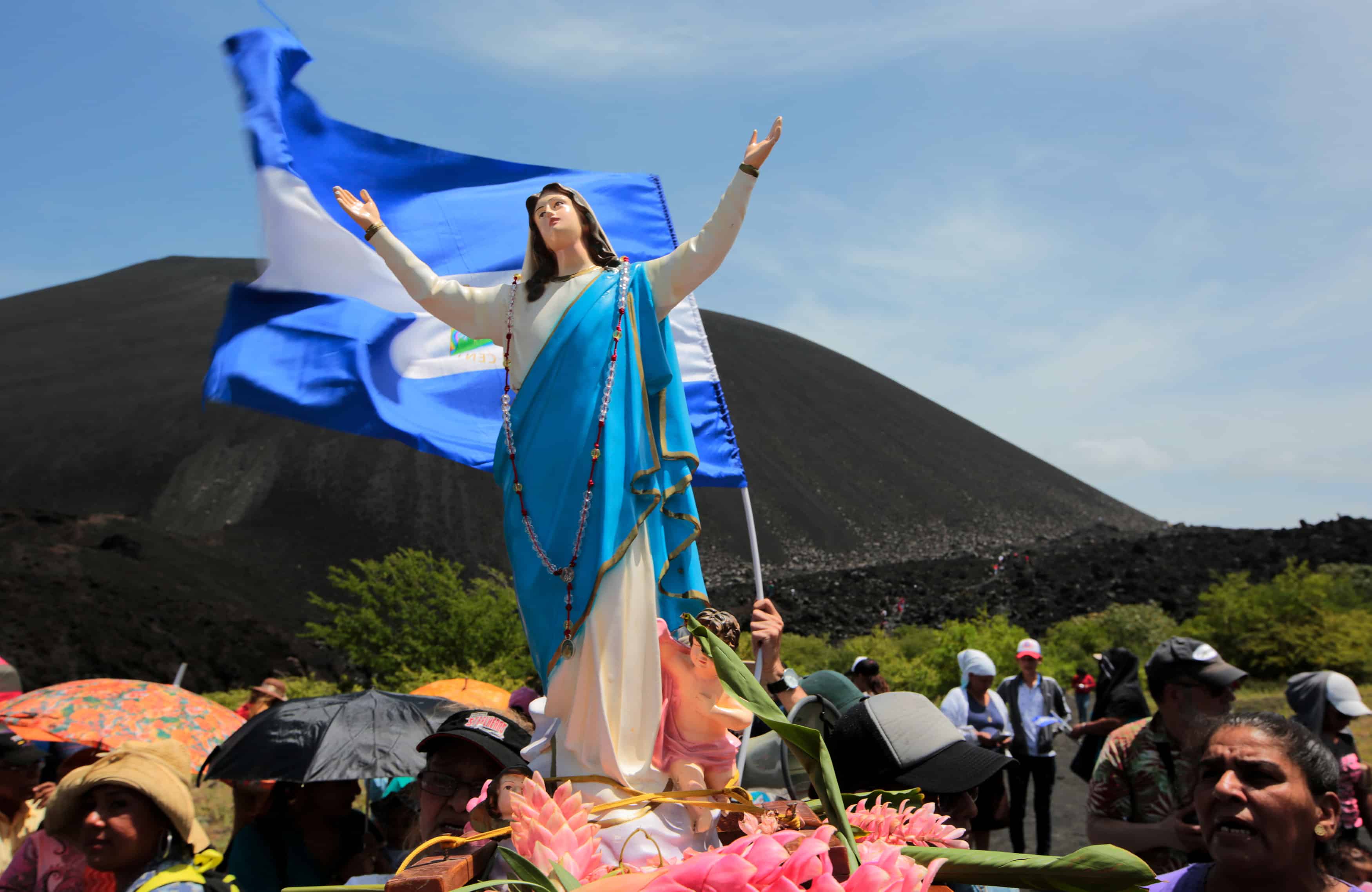Eight Months In
When the stalemate between the Ortega regime and most of the populace began around late July, the world stopped following Nicaragua. But as the conflict completes eight months since its beginning, it’s certainly not over. It continues, prolonged into the indefinite future. Will there be peace in 2021, when the next elections are scheduled? Or might there appear a solution in the meantime? It’s impossible to tell.
One NGO, the Nicaraguan Association for Human Rights (ANPDH), estimated in September that 512 people had died at the hands of government and pro-government (paramilitary and parapolice) forces since April 18.1 The number keeps climbing.
In the thick of the recent violence, the Catholic Church has lived up to the heroic reputation it gained in Central America in the 1980s and 1990s. For continually siding with the people, priests and bishops have received a host of death threats. The papal nuncio and Silvio José Báez, Auxiliary Bishop of Managua, were physically attacked in early July. Priests continue to be harassed by the government and its supporters. But the Church hasn’t backed down.
In my estimation, some recognition is due.
Pulling together “pieces for a portrait,” as María López Vigil titled her biography of St. Óscar Romero, it’s time to sketch the history of the Church in Nicaragua in the last eight months.
*****
The Death Threats
On April 18, the Ortega regime announced it would reform social security in Nicaragua. The system was risking insolvency, so pensions were to be reduced and payments into the system were to be increased. The following day, students went out to protest. But a few days after that, it wasn’t just students and pensioners.
“Tens of thousands of people” were opposed to the new measures, the whole of civil society, it seemed. The streets were filled with “university students, pensioners, environmentalists, feminists, religious leaders, black and Indigenous activists, journalists as well as left-wing and right-wing opposition groups.”
Since 2006, Ortega has consolidated power with his wife and vice president Rosario Murillo at his side. Under the guise of revolutionary politics and nostalgia, it’s been business as usual.
“April was an eruption of what festered:” of all the wounds accrued from the US-backed Somoza dynasty from the 1940s to the 70s, the revolution that brought Ortega and other revolutionaries to power in 1979, the US-funded Contra War that followed, and the neoliberal nineties. And now, the wounds to Nicaragua’s democracy since 2006.
The protests looked like real potential for change in a Nicaragua in sore need of it.
And Nicaraguan clerics got behind the broad coalition calling for change, especially José Silvio Baéz, an auxiliary bishop for Managua whose Twitter feed constantly declared support for the protesters. Then came death threats.
In late May, the rector of the Jesuit university in Managua, the Central American University (UCA), Fr. José Alberto Idiaquez, S.J. had allowed hundreds of people to shelter themselves at the UCA when protests turned violent.2 Meanwhile, bishops and other prominent Church figures had been participating in a peace dialogue with the Ortega government. It became clear the regime would not comply with agreed-upon terms as students continued to die after agreements were reached.
In early June paramilitaries sent death threats, and they would become more credible in mid-June as the national dialogue, as it was called, failed.
Idiaquez was a prime target. As the rector of the UCA, he had high visibility. So was Silvio Baéz, who maintained the highest visibility of all the senior clerics in the country. Other clerics were attacked, including the bishop of Estelí. It wouldn’t be until July that the Church would become a bigger problem for the Ortega regime.
To date no cleric has been killed in Nicaragua. Ortega probably remembers that the death of six Jesuit priests in 1989 turned the tables for the Salvadoran government of the time as the US cut off military aid.
There are other tactics to push the Church out of the way.
*****
A Fake News Campaign
Beginning in July, there was a surge in violence. Preparing for July 19th, the anniversary of the revolution’s victory in 1989, the government needed a victory, even if it may be a fictitious one.
At the time rumors of sapos, trolls spinning a version of events on social media, began to appear. But they only seemed to be capable of mimicking government rhetoric, so they were easily outed. But branding the opposition as terrorists who push fake news has been effective in keeping some loyal supporters.
Not only did the government “[launch] a new crackdown on the Catholic Church, stopping a group of priests who were trying to broker a dialogue between pro- and anti-government forces,” but it set up alternative theological narratives to claim legitimacy.
Rosario Murillo, the Vice President and wife of Daniel Ortega, described repression of protesters as a “miraculous event, the work of faith in God.” The same day, paramilitaries prevented Catholic priests from mediating a peaceful solution to the day’s clash.
At the same time, La Candelaria church in the department of Estelí was surrounded and blockaded by police and paramilitaries, trapping priests and parishioners inside.
In Diriamba, San Sebastián Basilica was also surrounded. As Baéz, Managua Archbishop Leopoldo Brenes, and the papal nuncio arrived to intervene, they were attacked by the paramilitaries waiting outside. They were punched and their episcopal insignia stolen; Báez was photographed afterwards, his white cassock stained with blood from a wound on his arm.
But the attack wasn’t designed just to intimidate. As they approached, the crowd was yelling “¡queremos paz!”, “we want peace!”
The bishops were being used to craft Ortega’s counternarrative. It was classic gaslighting: the people were told that Ortega sympathizers only wanted peace. Clearly there was no attack on the bishops, even though it was caught on camera.
Days later, the bishops declared, again, that they were still willing to mediate with the Ortega regime. But in vain.
In Managua, Divina Misericordia church was surrounded. Students trying to evacuate from the National University (UNAN) were trapped inside. Paramilitaries fired at the church all night, leaving one dead.
Even after a national strike on July 13 in which the streets were empty and businesses closed to demand a change in government, the Ortega regime still managed to scrounge up supporters for a rally on July 19 to give the illusion of real division in the country instead of a government attacking its own people. On the 39th anniversary of the revolution, Daniel Ortega gave a speech in which he asserted that his government would not be overthrown by foreign interference, and claimed that the bishops were golpistas, attempting a coup d’état by their public actions.
Aside from Daniel Ortega appearing on Fox News less than a week later, about then is when foreign media lost most attention, leaving Nicaraguans without hope for a realistic exit strategy.
*****
Languishing without Solutions
Since the end of July, solutions for this crisis have continued to dry up.
Protesters know how willing the government is to take their lives. Paramilitaries are well armed.
Trusted observers of the crisis are being removed from the country. The Inter-American Commission on Human Rights was kicked out of Nicaragua at the beginning of September after publishing a report critical of the Ortega regime.
Violence continues and arbitrary detention has become standard practice. Meanwhile, there is increasing concern over the treatment of hundreds of political prisoners, whom the government recognized only a couple weeks ago.
The Church still has not backed down despite continued threats and attacks. In July, several churches were desecrated in Jinotega, in northern Nicaragua. After threats against Bishop Álvarez of Matagalpa, the clergy of Matagalpa and Managua closed ranks behind Álvarez, declaring their support at the beginning of September. And a priest in León was attacked in mid-September, and may lose an eye.
And only days ago, a priest hearing confessions in Managua’s cathedral was the subject of an acid attack.
The ongoing conflict has not undermined the Church’s solidarity with the people, but grounded it.
“We are being mocked and insulted; it’s painful. But I can’t but continue to support the people. I wouldn’t be much of a priest if I didn’t,” Fr. Edwin Román Calderón said.
*****
The Best of the Church among the Worst of the World
As a Jesuit friend of mine told me, it’s as though the grandparents who won the revolution are killing their own grandchildren for having the same revolutionary desires.
For today’s Nicaraguan clergy, I imagine it’s much the same as it is for all the young people who continue to protest. A generation ago, their forebears made the Church in Central America famous for uncompromising commitment to the people of God. Unfortunately, they’ve also been given the opportunity to show the best the Church has in some of the worst of circumstances the world has to offer.
As the Universal Church basks in the glow of El Salvador’s first saint, it’s also time we recognize the Church in Nicaragua for the trauma suffered this year. Undeterred by violence, the Church has risked much for peace in a country where demons roam loose again.
- The Inter-American Commision on Human Rights (IACHR) puts the number at 320; the government only claims 200. The discrepancies can be accounted for by a variety of factors, including political motives and lack of access. As an arm of the Organization of American States, the IACHR has to maintain a public image of balance. However, it was also expelled from Nicaragua by the Ortega regime last month, meaning it can no longer verify alleged deaths. ↩
- Universities in many parts of Latin America are autonomous, meaning police cannot enter at will. Students not only sheltered themselves in other universities in Managua, but barricaded themselves in for protection. ↩


